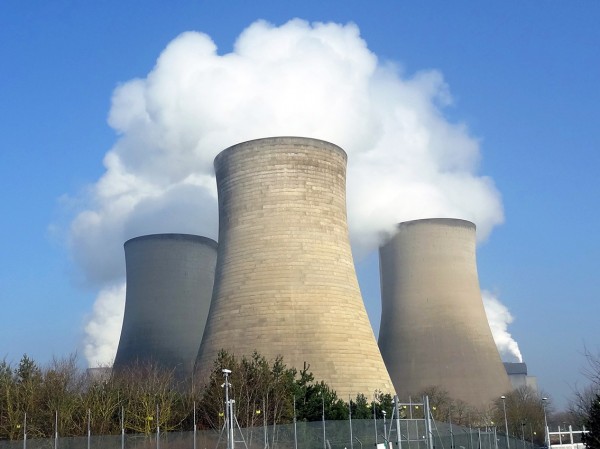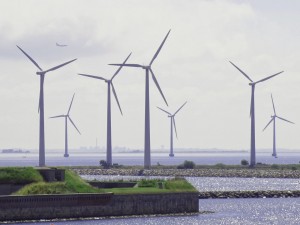 The UK economy faces a growing problem of energy supplies as energy demand continues to rise and as old power stations come to the end of their lives. In fact some 10% of the UK’s electricity generation capacity will be shut down this month.
The UK economy faces a growing problem of energy supplies as energy demand continues to rise and as old power stations come to the end of their lives. In fact some 10% of the UK’s electricity generation capacity will be shut down this month.
Energy prices have risen substantially over the past few years and are set to rise further. Partly this is the result of rising global gas prices.
In 2012, the response to soaring gas prices was to cut gas’s share of generation from 39.9% per cent to 27.5%. Coal’s share of generation increased from 29.5% to 39.3%, its highest share since 1996 (see The Department of Energy and Climate Change’s Energy trends section 5: electricity). But with old coal-fired power stations closing down and with the need to produce a greater proportion of energy from renewables, this trend cannot continue.
 But new renewable sources, such as wind and solar, take a time to construct. New nuclear takes much longer (see the News Item, Going nuclear). And electricity from these low-carbon sources, after taking construction costs into account, is much more expensive to produce than electricity from coal-fired power stations.
But new renewable sources, such as wind and solar, take a time to construct. New nuclear takes much longer (see the News Item, Going nuclear). And electricity from these low-carbon sources, after taking construction costs into account, is much more expensive to produce than electricity from coal-fired power stations.
So how will the change in balance between demand and supply affect prices and the security of supply in the coming years. Will we all have to get used to paying much more for electricity? Do we increasingly run the risk of the lights going out? The following video explores these issues.
Webcast
UK may face power shortages as 10% of energy supply is shut down BBC News, Joe Lynam (4/4/13)
Data
Electricity Statistics Department of Energy & Climate Change
Quarterly energy prices Department of Energy & Climate Change
Questions
- What factors have led to a rise in electricity prices over the past few years? Distinguish between demand-side and supply-side factors and illustrate your arguments with a diagram.
- Are there likely to be power cuts in the coming years as a result of demand exceeding supply?
- What determines the price elasticity of demand for electricity?
- What measures can governments adopt to influence the demand for electricity? Will these affect the position and/or slope of the demand curve?
- Why have electricity prices fallen in the USA? Could the UK experience falling electricity prices for similar reasons in a few years’ time?
- In what ways could the government take into account the externalities from power generation and consumption in its policies towards the energy sector?
 The UK hosted the third Clean Energy Ministerial conference on 25/26 April 2012. More than 20 energy ministers from around the world attended. In his address, David Cameron, gave his backing to more wind farms being built in the UK, both onshore and offshore.
The UK hosted the third Clean Energy Ministerial conference on 25/26 April 2012. More than 20 energy ministers from around the world attended. In his address, David Cameron, gave his backing to more wind farms being built in the UK, both onshore and offshore.
Currently just under 10 per cent of the UK’s electricity is generated from renewable sources. But to meet agreed EU targets this must increse to at least one-third by 2020. Most of this will have to come from wind.
But whilst wind turbines create no CO2 emissions, electricity generated from wind is currently some 15% more expensive than from gas. To make wind power profitable, energy companies are required by law to generate a certain percentage of their electricity from renewables and the cost is passed on to the consumer. This adds some £20 per year to the average household energy bill.
Over the coming years, many new power plants will have to be built to replace the electricity generated from older plants that reach the end of their life. So what types of plant should be built? Unfortunately measuring the costs and benefits from power generation is not easy. For a start, energy needs are not easy to predict. But more importantly, electricity generation involves huge environmental and social externalities. And these are extremely difficult to measure.
What is more, the topic is highly charged politically. The social costs do not fall evenly on the population. People might favour wind turbines, but they do not want to see one outside their window – or from their golf course!
The following videos and articles will give you some insight into the difficulties that any decision makers face in making the ‘right’ decisions about electricity generation
Webcasts and podcasts
 Can Cameron still claim the ‘greenest government ever’? Channel 4 News, Tom Clarke (26/4/12)
Can Cameron still claim the ‘greenest government ever’? Channel 4 News, Tom Clarke (26/4/12)
 Energy Secretary: UK will meet green targets BBC News, Ed Davey (25/4/12)
Energy Secretary: UK will meet green targets BBC News, Ed Davey (25/4/12)
 Donald Trump attacks Scottish government’s green policy BBC News, James Cook (25/4/12)
Donald Trump attacks Scottish government’s green policy BBC News, James Cook (25/4/12)
 Trump: Wind farms ‘bad for Scotland’ BBC News (24/4/12)
Trump: Wind farms ‘bad for Scotland’ BBC News (24/4/12)
 Tycoon Trump fights Scotland over wind farms near golf resortReuters, Deborah Gembara (25/4/12)
Tycoon Trump fights Scotland over wind farms near golf resortReuters, Deborah Gembara (25/4/12)
 Wind power blows Siemens off course Euronews, Anne Glemarec (25/4/12)
Wind power blows Siemens off course Euronews, Anne Glemarec (25/4/12)
 Mexico inaugurates largest wind farm in Latin America BBC News, Carolina Robino (9/3/12)
Mexico inaugurates largest wind farm in Latin America BBC News, Carolina Robino (9/3/12)
 BP’s Flat Ridge 2 Wind Farm in Kansas YouTube, BPplc (10/4/12)
BP’s Flat Ridge 2 Wind Farm in Kansas YouTube, BPplc (10/4/12)
 Arnold Schwarzenegger: Green quest goes on BBC News (26/4/12)
Arnold Schwarzenegger: Green quest goes on BBC News (26/4/12)
 Denmark Pioneers Clean Energy Green TV (18/4/12)
Denmark Pioneers Clean Energy Green TV (18/4/12)
 EU wind industry defies recession Green TV (16/4/12)
EU wind industry defies recession Green TV (16/4/12)
 Wind Farm Issues – Compilation LiveLeak (15/4/12)
Wind Farm Issues – Compilation LiveLeak (15/4/12)
News articles
David Cameron commits to wind farms The Telegraph, Louise Gray (26/4/12)
David Cameron says wind energy must get cheaper The Telegraph, Louise Gray (27/4/12)
Could 2012 be year of the wind turbine? The Telegraph, Louise Gray (3/2/12)
Green energy vital, says David Cameron Independent, Emily Beament (26/4/12)
Cameron: renewables are ‘vital to our future’ businessGreen, Will Nichols and James Murray (26/4/12)
Green energy ‘must be affordable’ – Cameron BBC News (26/4/12)
Wind farms will kill tourism, says Donald Trump Independent (25/4/12)
Donald Trump accuses Salmond of ‘betrayal’ over wind farm plans The Telegraph, Simon Johnson (25/4/12)
Turbine scheme provokes wuthering gale of protest Independent, Mark Branagan (6/4/12)
Prince Charles endorses wind power in new film at Sundance Festival The Telegraph, Roya Nikkhah (29/4/12)
Study claims tourists ‘not put off’ by wind farms in Scotland BBC News (24/4/12)
Tide turns in favour of wave power instead of wind farms Scotsman, David Maddox (23/4/12)
Rush towards wind-generated electricity will not reduce fuel poverty Power Engineering (21/4/12)
Shell says no to North Sea wind power Guardian, Terry Macalister (26/4/12)
David Cameron, the Speech He Needs to Make Huffington Post, Juliet Davenport (25/4/12)
Campaigners want David Cameron to come clean over wind farm policy Western Daily Press (27/4/12)
Being Green Doesn’t Mean Higher Electricity Costs Says Green Energy UK DWPub (27/4/12)
Documents
Cost Benefit Methodology for Optimal Design of Offshore Transmission Systems Centre for Sustainable Electricity and Distributed Generation, Predrag Djapic and Goran Strbac (July 2008)
A Cost Benefit Analysis of Wind Power University College Dublin, Eleanor Denny (19/1/07)
Ecological and economic cost-benefit analysis of offshore wind energy Renewable Energy 34, Brian Snyder, Mark J. Kaiser (2009)
Questions
- Why is difficult to predict the future (financial) cost per kilowatt-hour of electricity generation by the various methods?
- Why is it difficult to estimate the demand for electricity in 10 years’ time?
- Identify the external benefits and costs of electricity generation from (a) onshore wind turbines; (b) offshore wind turbines.
- Is ‘willingness to pay’ a good method of establishing the value of external benefits and costs?
- What are the steps in a cost–benefit analysis?
- What types of problems are there in measuring external benefits and costs?
Energywatch, an industry watchdog, has argued in a recent report to MPs that Britain’s electricity and gas supply industry is a “comfortable oligopoly” that feels little need to innovate or compete. They have called for the sector to be subject to a Competition Commission investigation.
Power companies are ripping off consumers Times Online (21/5/08)
Age of cheap power is over Times Online (21/5/08)
Call to investigate energy ‘oligopolies’ Guardian (21/5/08)
Questions
| 1. |
Explain the main characteristics of an oligopolistic industry. |
| 2. |
What aspects of the electricity and gas supply market would the Competition Commission consider if asked to investigate the industry? |
| 3. |
Assess the extent to which the electricity supply industry exhibits oligopolist collusion. |
In the article below, Ashley Seager from the Guardian argues that the government is doing little to encourage the take-up and adoption of alternative forms of energy generation for households. Indeed he argues hat the situation has got worse and not better in recent months with changes in the system. Only 270 houses were helped with the fitting of photovoltaic systems last year. In Germany the equivalent figure was 130,000.
Reasons to see red over green energy Guardian (18/2/08)
Questions
| 1. |
Assess the external costs and external benefits resulting from installing a photovoltaic electricity generation system on a house. |
| 2. |
Using diagrams as appropriate, show how the installation of photovoltaic cells on houses will alter the socially optimal market equilibrium. |
| 3. |
Evaluate two policies that the government could use to encourage the more widespread adoption of alternative methods of generating power. |
 The UK economy faces a growing problem of energy supplies as energy demand continues to rise and as old power stations come to the end of their lives. In fact some 10% of the UK’s electricity generation capacity will be shut down this month.
The UK economy faces a growing problem of energy supplies as energy demand continues to rise and as old power stations come to the end of their lives. In fact some 10% of the UK’s electricity generation capacity will be shut down this month. But new renewable sources, such as wind and solar, take a time to construct. New nuclear takes much longer (see the News Item, Going nuclear). And electricity from these low-carbon sources, after taking construction costs into account, is much more expensive to produce than electricity from coal-fired power stations.
But new renewable sources, such as wind and solar, take a time to construct. New nuclear takes much longer (see the News Item, Going nuclear). And electricity from these low-carbon sources, after taking construction costs into account, is much more expensive to produce than electricity from coal-fired power stations.
